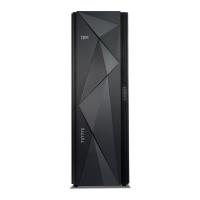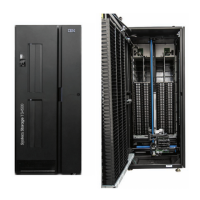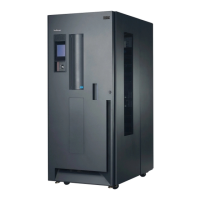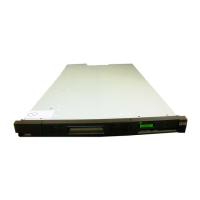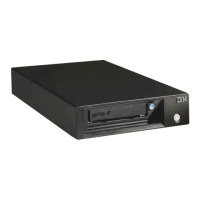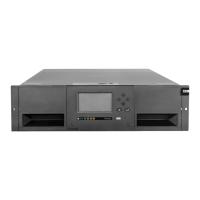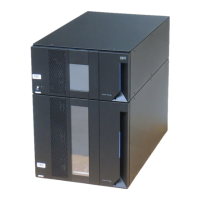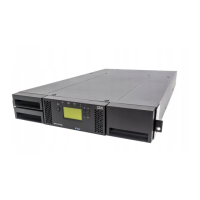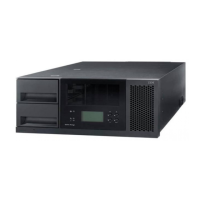Table 8. Appliance installation checklist (continued)
U Task Description Where to find information
h 4–3 Power-up the disk controllers. This document: “Disk controllers” on page 68
h 4–4 Power-up Server A (in stand-alone
installations, the only server in the frame).
This document: “Servers” on page 69
h 4–5 Power-up Server B (clustered installations
only).
This document: “Servers” on page 69
h 4–6 Power-up the TSSC, KVM, and KVM switch. This document: “TSSC, KVM, and KVM
switch” on page 70
Section 5: Perform post-installation validation checks
h 5–1 Check power indicators for all components. This document: “Visually inspecting indicator
and fault LEDs” on page 70
h 5–2 Validate Ethernet link-up indicators on TSSC. This document: “Visually inspecting indicator
and fault LEDs” on page 70
h 5–3 Validate Ethernet link-up indicators on the
customer network to the server and the
TSSC.
This document: “Visually inspecting indicator
and fault LEDs” on page 70
h 5–4 Validate Fibre Channel link-up indicators
from the disk controller to the server.
This document: “Visually inspecting indicator
and fault LEDs” on page 70
h 5–5 If installing VTL, validate Fibre Channel
link-up indicators from customer host to the
server.
This document: “Visually inspecting indicator
and fault LEDs” on page 70
h 5–6 If installing OpenStorage, validate Ethernet
link-up indicators from customer host to the
server.
This document: “Visually inspecting indicator
and fault LEDs” on page 70
h 5–7 Validate Ethernet link-up indicators from the
disk controller to the server.
This document: “Visually inspecting indicator
and fault LEDs” on page 70
Section 6: Customize KVM switch and configure the TSSC for use with the TS7650 Appliance
h 6–1 Customize the KVM switch user interface. This document: Chapter 4, “Setting up the
KVM switch,” on page 71
h 6–2 Configure the communication settings of the
TSSC.
This document: “Configuring the TSSC” on
page 79
h 6–3 Configure the TSSC with both 3958-AP1s as a
complex system.
This document: “Verifying the complex
systems attached to the TSSC” on page 90
Section 7: Perform ProtecTIER RAS configuration and verification
h 7–1 Enable ProtecTIER RAS on the server or
servers.
This document: Chapter 6, “Enabling
ProtecTIER RAS functions,” on page 85
h 7–2 Configure the server or servers as a complex
system on the TSSC.
This document: “Verifying the complex
systems attached to the TSSC” on page 90
h 7–3 Calibrate server batteries. This document: “Calibrating the server
battery” on page 94
h 7–4 Test Call Home on the server or servers. This document: “Testing Call Home” on page
97
Section 8: SSR releases the system to trained ProtecTIER specialist or LBS representative
h 8–1 Turn the system over to the trained
ProtecTIER specialist or LBS representative
for ProtecTIER configuration and ProtecTIER
Manager installation.
This document: Chapter 7, “Configuring
ProtecTIER,” on page 101 and Chapter 8,
“Installing ProtecTIER Manager on the
ProtecTIER Manager workstation,” on page
127
Chapter 3. Installing the appliance 23
